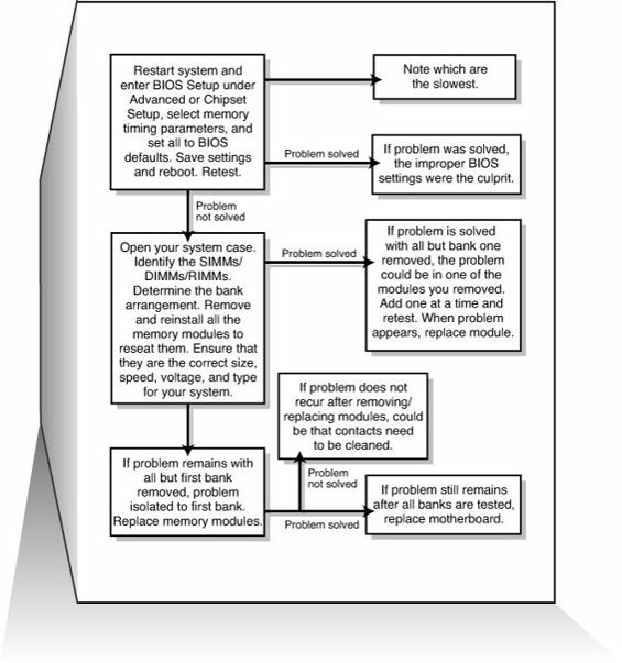Hardware Reference
In-Depth Information
Memory Defect Isolation Procedures
To use these steps, I am assuming you have identified an actual memory problem that the POST or
disk-based memory diagnostics have reported. If this is the case, see the following steps and
Figure
6.22
for instructions to identify or isolate which module is causing the problem.
Figure 6.22. Follow these steps if you are still encountering memory errors after completing the
steps in
Figure 6.20
.
1.
Restart the system and enter the BIOS Setup. Under a menu usually called Advanced or Chipset
Setup might be memory timing parameters. Select BIOS or Setup defaults, which are usually the
slowest settings. If the memory timings have been manually set, as shown in
Figure 6.20
,
reset
the memory configuration to By SPD.
2.
Save the settings, reboot, and retest using the testing and troubleshooting procedures listed
earlier. If the problem has been solved, improper BIOS settings were the problem. If the
problem remains, you likely do have defective memory, so continue to the next step.
3.
Open the system for physical access to the modules on the motherboard. Identify the bank
arrangement in the system. Using the manual or the legend silk-screened on the motherboard,
identify which modules correspond to which banks. Remember that if you are testing a





